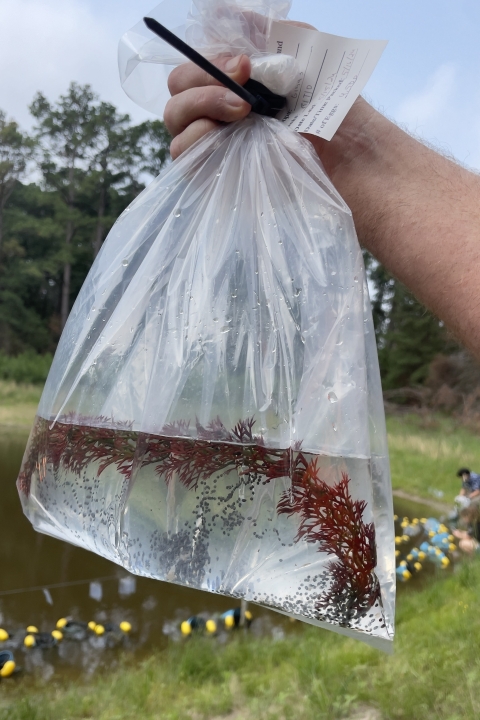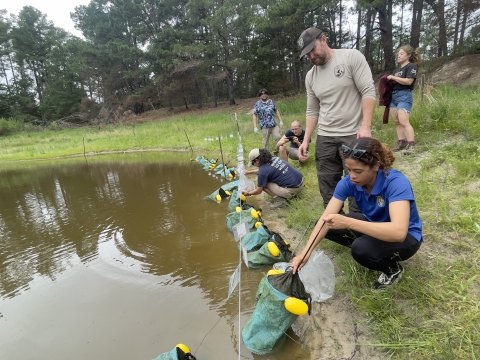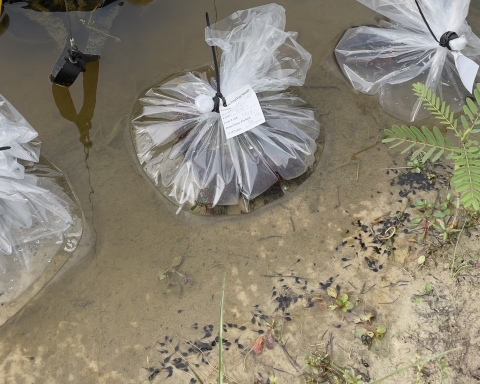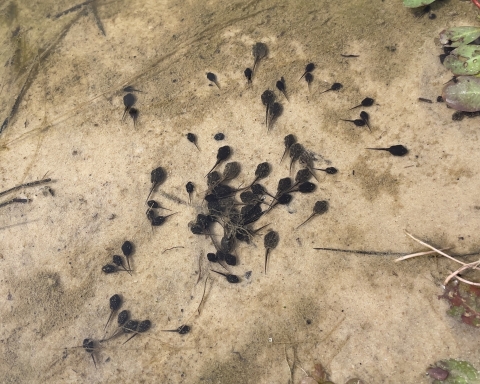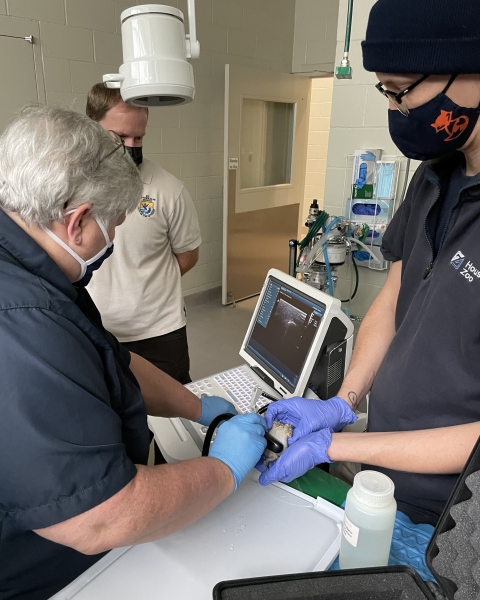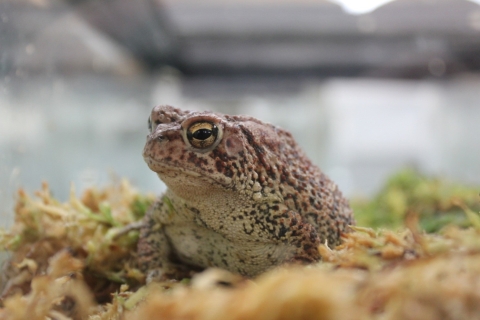This year, partners in the Houston Toad Recovery Program, including the Houston Zoo, U.S. Fish and Wildlife Service’s San Marcos Aquatic Resources Center, Fort Worth Zoo and Dallas Zoo, produced and released more than 3.5 million Houston toad eggs to supplement the wild populations in Central Texas.
The endangered Houston toad was one of the first amphibians to be protected under the Endangered Species Act and remains one of Texas’ most critically endangered species. While first described based on specimens collected from Houston, today they are mainly found in Bastrop County east of Austin.
In addition to habitat loss, Houston toads are threatened by small population sizes and isolation. To help bring the species back from the brink of extinction, one of the key goals of the Houston Toad Recovery Plan is to produce more than 1 million eggs per year to help reverse declining populations.
Since 2007, the captive breeding partners have been diligently working towards this goal, with researchers conducting additional monitoring to measure their survival in the areas where the toads have been supplemented.
At the final release event of the year in May, the Houston Zoo, U.S. Fish and Wildlife Service and researchers from Texas State University met at a toad-friendly pond on a privately owned ranch in Bastrop County to release the remaining 180,000 eggs produced in 2024.
After arriving in an ATV loaded up with buckets of the precious cargo, the team began by acclimating the bags of egg strands to the temperature and pH of the water in the remote pond located deep within the ranch. Once a few minutes had passed, the team gently opened the bags and placed the eggs into mesh enclosures along the shallow shoreline. The protective enclosures will keep the eggs safe until the tadpoles hatch and swim out.
Along the shore, evidence of this year’s previous egg releases could be seen in the throngs of tadpoles that were gathered in the shallow water. During the day, Houston toad tadpoles hang out on the bottom of the ponds, and at night, they feed on material attached to vegetation in the water and along the pond’s edge, including pollen and the jelly envelopes of recently hatched Houston toad eggs.
For many pond-breeding amphibians, only about five percent of eggs survive to metamorphosis. Those that survive and turn into tiny toadlets will concentrate within 15 feet of the ponds edge for about one to three weeks, eating small invertebrates and trying to avoid predators like red-imported fire ants, birds and snakes.
Once they become adults, the brown-speckled toads will venture away from the pond to find suitable terrestrial habitat for sheltering, feeding and dispersal. In Bastrop County, the semi-aquatic amphibians spend the majority of their time in the deep sandy soil under the cover of the Loblolly pine forest, returning to the ponds every year to breed and reproduce.
While the spring egg release season is extra busy, Houston toad captive breeding and research continues year-round. At the hatchery and zoos, biologists care for the captive-held females and males, use artificial insemination to ensure successful reproduction, follow protocols to ensure the pairings are genetically diverse, and conduct outreach to educate the public about the imperiled toads and their recovery.
Local landowners are also key partners in the success of captive breeding programs by ensuring the toads have suitable habitat to disperse onto once they leave their natal ponds.
To date, more than a dozen non-federal landowners have enrolled more than 2,000 acres in the Texas Parks and Wildlife Department’s voluntary Houston Toad Programmatic Safe Harbor Agreement. The agreement allows for eligible landowners to improve wildlife habitat on their property and actively contribute to the recovery of an endangered species without fear of increased liability. Landowners interested in enrolling in the SHA should contact TPWD at (512) 389-8722.
Landowners can also help the Houston toad by participating in the Lost Pines Habitat Conservation Plan managed by Bastrop County. The LPHCP is a voluntary plan which allows for the long-term preservation, restoration and management of habitat for the toad across 124,000 acres in Bastrop County.
To learn more about the Houston toad, visit our website.

